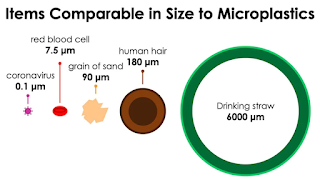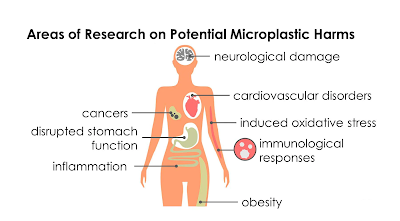Understanding the Tiny Threat Inside Your Meals
In today's modern world, plastic pollution has reached alarming levels, infiltrating nearly every corner of the environment, including our food. Microplastics, tiny plastic particles measuring less than 5 millimeters, have stealthily entered the food chain, raising concerns about their impact on human health. Let's explore the issue of microplastics in food, the amount present in the human body, and strategies to enhance food safety.
Microplastics in Food: A Growing Concern
Microplastics in food have become a pressing issue due to their ubiquity. These minuscule plastic particles find their way into our meals through various routes, such as contaminated water sources, plastic packaging, and food processing methods. Seafood, salt, and even fruits and vegetables have all been found to contain microplastics.
Microplastics in the Human Body
Research indicates that microplastics are not just an environmental concern; they are also present in the human body. Recent studies have shown that microplastics have been detected in human tissues and organs. This raises concerns about potential health risks associated with microplastics ingestion as microplastics interfere with the production, release, transport, metabolism, and elimination of hormones, which can cause endocrine disruption and lead to various endocrine disorders, including metabolic disorders, developmental disorders, and even reproductive disorders. The inability of the immune system to remove synthetic particles may lead to inflammation and risk of neoplasia, the abnormal growth of cells in the body. Furthermore, microplastics may release their constituents or pathogenic organisms. Regardless, knowledge on microplastic toxicity is limited and influenced by particle properties, exposure concentration and tissues involved, which require further research.
Chemical Amount vs. Safety Threshold
Determining the safe or ideal amount of microplastics in the human body from a chemical perspective is a complex task. Microplastics themselves are not inherently toxic; however, they can absorb and carry toxic chemicals. Ideally, there should be no microplastics in our bodies to minimize potential health risks.
Improving Food Safety
1. Reduce Plastic Usage: Consumers can make a significant impact by choosing products with minimal plastic packaging. Supporting brands and initiatives that prioritize sustainable packaging materials can help reduce the overall presence of microplastics in food.
2. Filtration Systems: Consider using water filtration systems at home to reduce the risk of microplastics in drinking water.
3. Sustainable Choices: Opt for sustainably sourced seafood and organic produce. These choices can reduce the likelihood of ingesting microplastics from contaminated sources.
4. Awareness and Advocacy: Stay informed about the issue of microplastics in food and support research and regulatory efforts to address this concern.
In conclusion, microplastics in food are an alarming consequence of plastic pollution. While the ideal chemical amount of microplastics in the human body is unknown, the best approach to ensure food safety is to minimize exposure. By making informed choices, reducing plastic usage, and supporting sustainable practices, we can work together to protect our health and the environment from the hidden threat of microplastics in our food.
Written by Rtr. Umar Ismail





Comments
Post a Comment